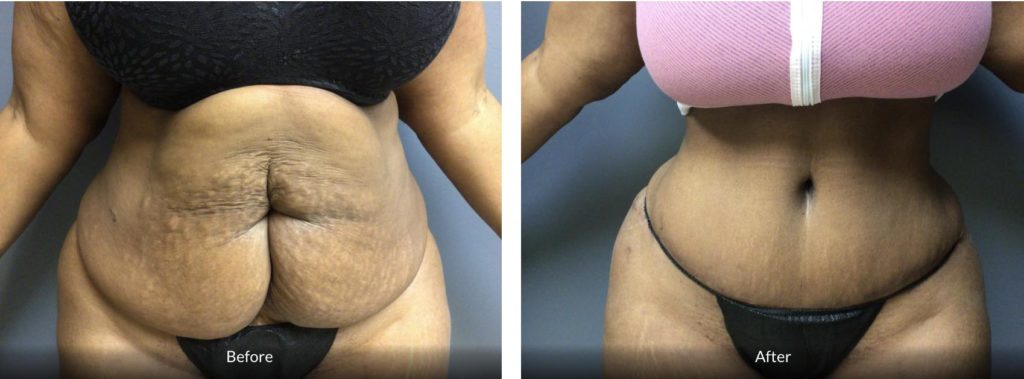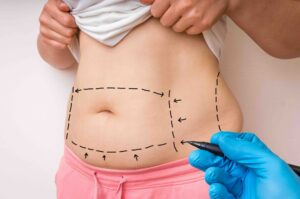
Tummy Tuck In Michigan
Are you dealing with stubborn belly fat or loose skin that doesn’t go away with diet and exercise? A tummy tuck (abdominoplasty) could be the solution you’ve been looking for. At Aesthetic Plastic Surgery & Laser Center in Farmington Hills, Michigan, board-certified plastic surgeon Dr. Michelle Hardaway offers tummy tuck procedures to help you achieve a flatter, firmer abdomen—and renewed confidence.
Why Choose Aesthetic Plastic Surgery & Laser Center for Tummy Tuck
Choosing to have cosmetic surgery is a big decision. At our center, we prioritize your safety, comfort, and goals. Dr. Hardaway’s expert care combines technical skill with artistic vision to deliver natural-looking, beautiful results. From your first consultation to full recovery, our caring team provides guidance every step of the way in a private, state-of-the-art setting.
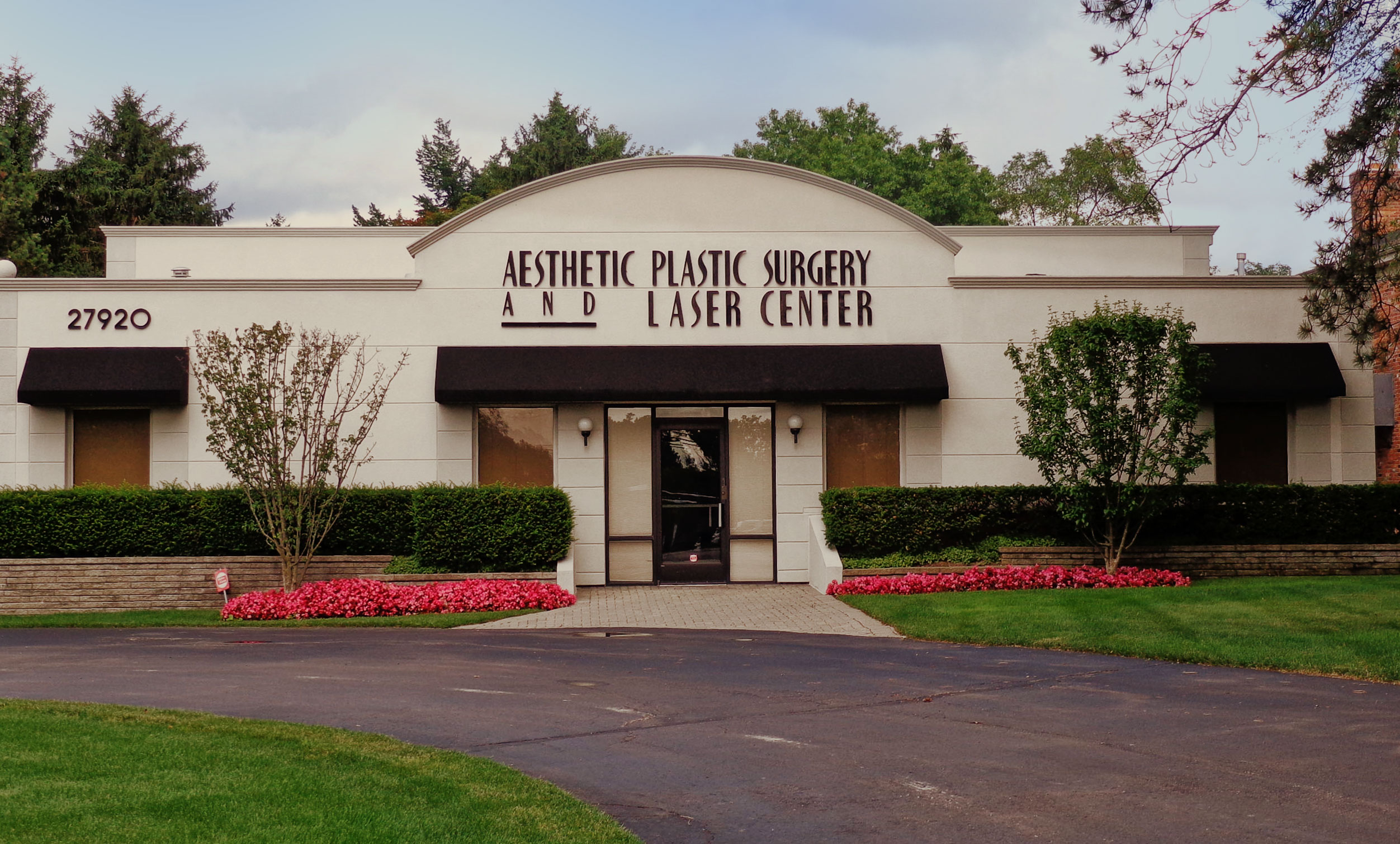
What Is a Tummy Tuck?
A tummy tuck removes excess skin and fat from the abdomen and tightens weak or separated abdominal muscles. It’s ideal for people who’ve experienced major weight loss, pregnancy, or aging-related skin laxity. While it’s not a weight loss surgery, it does enhance your shape and improve body confidence.
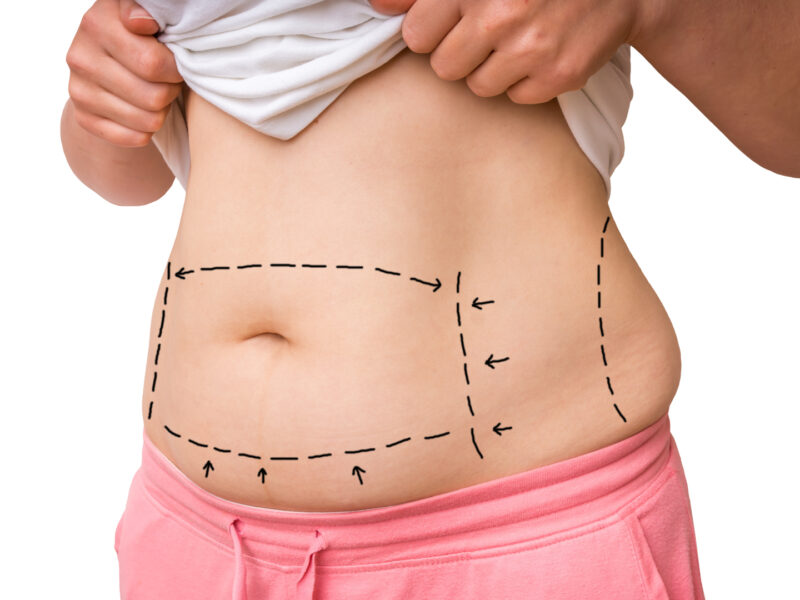
Types of Tummy Tuck Procedures
We offer several options, depending on your needs:
- Full Tummy Tuck: Treats the entire abdomen, from just below the breasts to the pubic area. This includes tightening muscles and repositioning the belly button.
- Mini Tummy Tuck: Focuses on the lower abdomen, below the belly button. It’s a less invasive option with a shorter scar and faster recovery—ideal for those with minimal excess skin.
Extended Tummy Tuck: Best for patients with significant skin excess, especially after major weight loss. This procedure extends to the flanks and lower back for more complete body contouring.
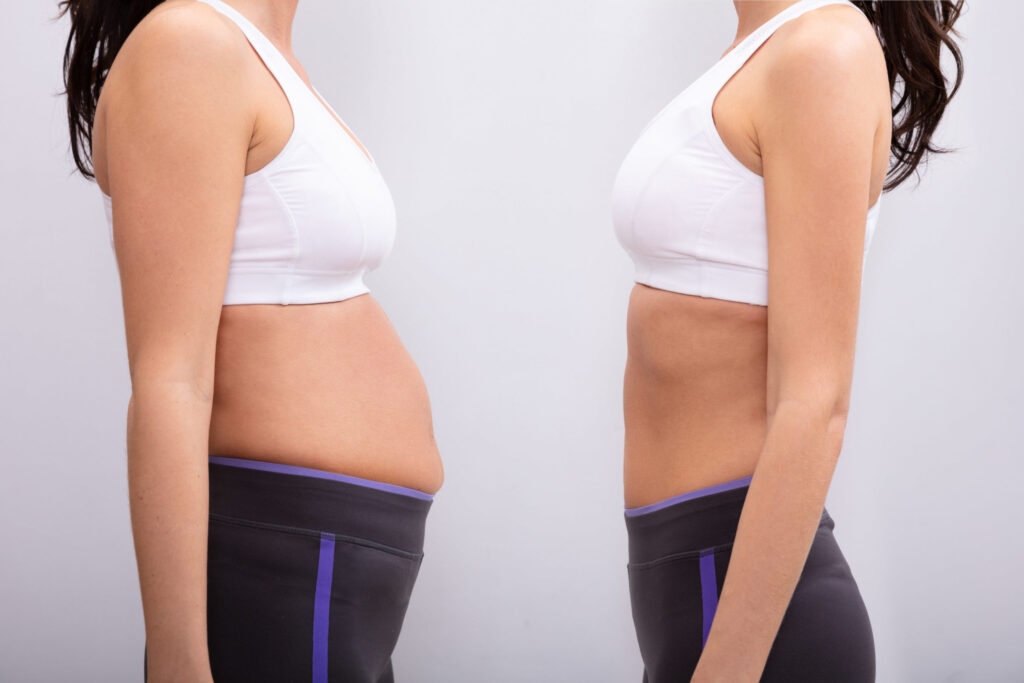
Who’s a Good Candidate?
You may be a good candidate for a tummy tuck if you’re in good health, close to your ideal weight, and not planning future pregnancies. It’s also important to be a non-smoker or willing to quit before and after surgery, and to have realistic expectations about the outcome. Many individuals choose this procedure after pregnancy or significant weight loss to restore a flatter, firmer abdomen when diet and exercise alone haven’t been effective.
What to Expect During Surgery
Tummy tuck surgery usually takes 2–5 hours under general anesthesia. Dr. Hardaway makes a low incision that can be hidden by underwear or swimwear. She then removes excess skin and fat, tightens abdominal muscles, and may use liposuction to further shape the area. The belly button may be repositioned, and sutures are placed to support healing. Temporary drainage tubes and a compression garment are used to help reduce swelling and aid recovery.
Recovery: A Week-by-Week Overview
- Week 1: Expect swelling, bruising, and discomfort. You’ll need help with daily activities. Rest in a slightly bent position and wear your compression garment. Drains are usually removed after a few days.
- Week 2: Pain and swelling improve. You may return to light activities or a desk job, but still need to avoid heavy lifting. Stitches are removed if necessary.
- Weeks 3–4: You can gradually resume more normal activity, but still no strenuous exercise. Swelling continues to go down.
- Weeks 6–8: Most patients are fully healed and can return to all normal activities, including workouts. Scars continue to fade over time.
Tummy Tuck After Weight Loss (Post-Bariatric Patients)
If you’ve lost a large amount of weight, you may have more extensive loose skin. We offer extended tummy tuck procedures tailored to post-bariatric patients. These may include longer incisions and additional body contouring, like arm or thigh lifts, often done in stages for safety. Dr. Hardaway carefully evaluates your health and nutritional status to ensure the best possible outcome.
Lipoabdominoplasty: Tummy Tuck + Liposuction
To achieve even more refined results, many patients combine tummy tuck surgery with liposuction. This combo—known as lipoabdominoplasty—targets stubborn fat in the waist, flanks, and upper abdomen while tightening skin and muscles. It offers a smoother, more sculpted midsection with a single recovery period.
The Emotional and Physical Benefits
A tummy tuck isn’t just about looking better—it’s about feeling better, too. Patients often describe feeling more confident in their clothes, standing taller, and enjoying activities they once avoided. For many, it’s a powerful step toward reclaiming their body and self-image after major life changes like childbirth or weight loss.
Financing and Scheduling
Tummy tuck procedures at our Michigan center are more accessible than you might think. We offer financing options to help make your transformation affordable. Many patients say their only regret is not doing it sooner.
Call us to transform your body!
Ready to feel confident in your body again? Schedule your consultation with Dr. Michelle Hardaway today. Call (248) 221-1957 to start your journey toward a flatter, firmer abdomen. Our team at Aesthetic Plastic Surgery & Laser Center is here to support you every step of the way.
FAQ’s and Common Concerns
Getting a tummy tuck is a big decision that requires careful consideration. Here we address some of the most frequently asked questions and common concerns patients have when exploring this procedure.
How long do the results of a tummy tuck last?
When performed by a skilled, board-certified plastic surgeon, tummy tuck results are designed to be long-lasting. However, significant weight fluctuations, pregnancy, and aging can impact your results over time. Maintaining a stable weight and healthy lifestyle helps prolong your improved contour.
What about scarring from a tummy tuck?
Some visible scarring is inevitable with any invasive surgery. However, your surgeon will make every effort to place incisions in discreet locations where they can be hidden by underwear or swimsuits. Over time, scars will continue to fade and flatten.
Is a tummy tuck painful?
You can expect some pain, swelling, and discomfort during the recovery process. Your surgeon will prescribe medication to help manage pain following surgery. Within 2-4 weeks, most patients report feeling much better.
Can a tummy tuck remove stretch marks?
If the stretch marks are located on the abdomen below the belly button, they can be removed during a full tummy tuck procedure. Stretch marks above the belly button may remain, but often appear smoother and less noticeable over time.
Are there nonsurgical options besides a tummy tuck?
Less invasive options like CoolSculpting, EmSculpt, or truSculpt can reduce small, localized fat deposits. But they cannot address loose, sagging skin or separated abdominal muscles like a tummy tuck can.
How long is the recovery time after a tummy tuck?
You’ll need to take 1-2 weeks off work and limit strenuous activity for 4-6 weeks. Swelling subsides within 2 months and you can resume exercise. Complete healing takes 9-12 months. Take things slow and be patient.
What are the risks of a tummy tuck?
Risks include bleeding, infection, scarring, loss of sensation, and fluid buildup. Choosing an experienced, board-certified plastic surgeon and following all pre- and post-op instructions minimizes potential complications.
Can a tummy tuck be combined with other procedures?
Yes, your surgeon may recommend combining a tummy tuck with liposuction, a breast procedure, or another body contouring surgery to achieve your goals. Discuss all your options during your consultation.
How do I choose the right plastic surgeon?
Look for a board-certified plastic surgeon with proven expertise in tummy tucks. View before/after photos, read reviews, and consult with 2-3 surgeons before deciding. Trust your gut instincts during consultations.
What is the typical cost of a tummy tuck?
The cost of the procedure depends on the wants and needs of each specific patient. A tummy tuck can be combined with other procedures such as liposuction. Dr. Hardaway’s staff will discuss pricing with you during your consultation. Occasionally, insurance will cover removal of excess skin and fat on the abdomen after massive weight loss.
What qualifies you for a tummy tuck?
The best candidates for a tummy tuck are those who:
- Are in relatively good shape
- Are at a stable weight
- Are in good physical health in general
This procedure is for those who are bothered by a large fat deposit or loose abdominal skin that won’t respond to diet or exercise. The surgery is particularly helpful to those who, through pregnancies, have stretched their abdominal muscles and skin beyond the point where they cannot return to normal. Loss of skin elasticity in older patients, which frequently occurs with slight obesity, can also be improved.
Is a tummy tuck worth it?
Tummy tuck results will last for many years if they are properly maintained. Weight gain and body changes can affect the results of a tummy tuck, and stomach fat can come back again. In general, it is important to maintain a healthy diet and regular exercise routine to maintain results for as long as possible.
Is Abdominoplasty A Major Surgery?
Abdominoplasty, or tummy tuck, is a major surgery. You should visit a board certified plastic surgeon for the procedure. For best and fastest results, make sure to follow proper aftercare instruction from your plastic surgeon after the surgery. Results from the procedure are visible immediately after surgery, though the full healing process will take longer. You will likely need to take a few weeks off of work to fully heal. Oral pain medication is required after a tummy tuck. This is often supplemented with a local anesthetic such as Exparel which can last up to three days. After one week post-op, narcotic pain medication should not be required and anti-inflammatory medication such as Motrin should be sufficient.
The healing process varies from patient to patient, and depends on the expanse of the surgery. You can shower when cleared by the doctor, usually about 48 hours after the drains are removed. You will need to sleep on an incline the first few days after surgery, and you will not be able to drive a few weeks after surgery. Do not exercise until cleared by the doctor, usually about 6 to 8 weeks after surgery. Follow up appointments will help make sure you are healing properly.
What Is A Tummy Tuck Procedure Like?
Complete tummy tuck surgery usually takes two to four hours, depending on the extent of work required. Partial tummy tucks may take an hour or two. Most commonly, Dr. Hardaway will make an incision from hipbone to hipbone, just above the pubic area. A second incision is made to free the navel from surrounding tissue. The skin flap is then stretched down and the extra skin is removed. A new hole is made for the navel, which is then stitched in place. Finally, the incisions will be stitched, dressing will be applied, and a temporary drainage tube may be inserted to drain excess fluid from the surgical site. A tummy tuck does produce a permanent scar. However, its appearance can be minimized through the use of non surgical treatments.
Are Tummy Tucks Painful?
For the first few days, your abdomen will probably be swollen and you’re likely to feel some pain and discomfort, which can be controlled by medication. Dr. Hardaway will give you instructions for showering and changing your dressing. And though you may not be able to stand straight at first, you should start walking even the night of surgery. A support garment should be worn for six weeks. If you start out in top physical condition, with strong abdominal muscles, recovery from a tummy tuck will be much faster. Some people return to work after two weeks, while others take three or four weeks to rest and recuperate.
How much weight can you lose with abdominoplasty?
There’s no precise amount of weight, or number of inches, or sizes you lose after a tummy tuck. As much skin that can be safely removed to achieve your desired shape is removed. A tummy tuck is not a weight loss procedure, and should not be used as a shortcut for weight loss. It is often wanted after dramatic weight loss to remove loose skin and help with body contouring.
Schedule Your Consultation
Why wait?
Schedule your first visit to Aesthetic Plastic Surgery & Laser Center by using online form
… or by calling (248) 780-0558
"*" indicates required fields

